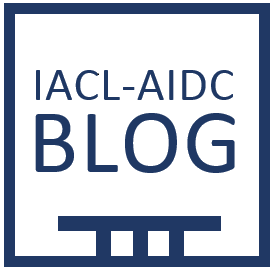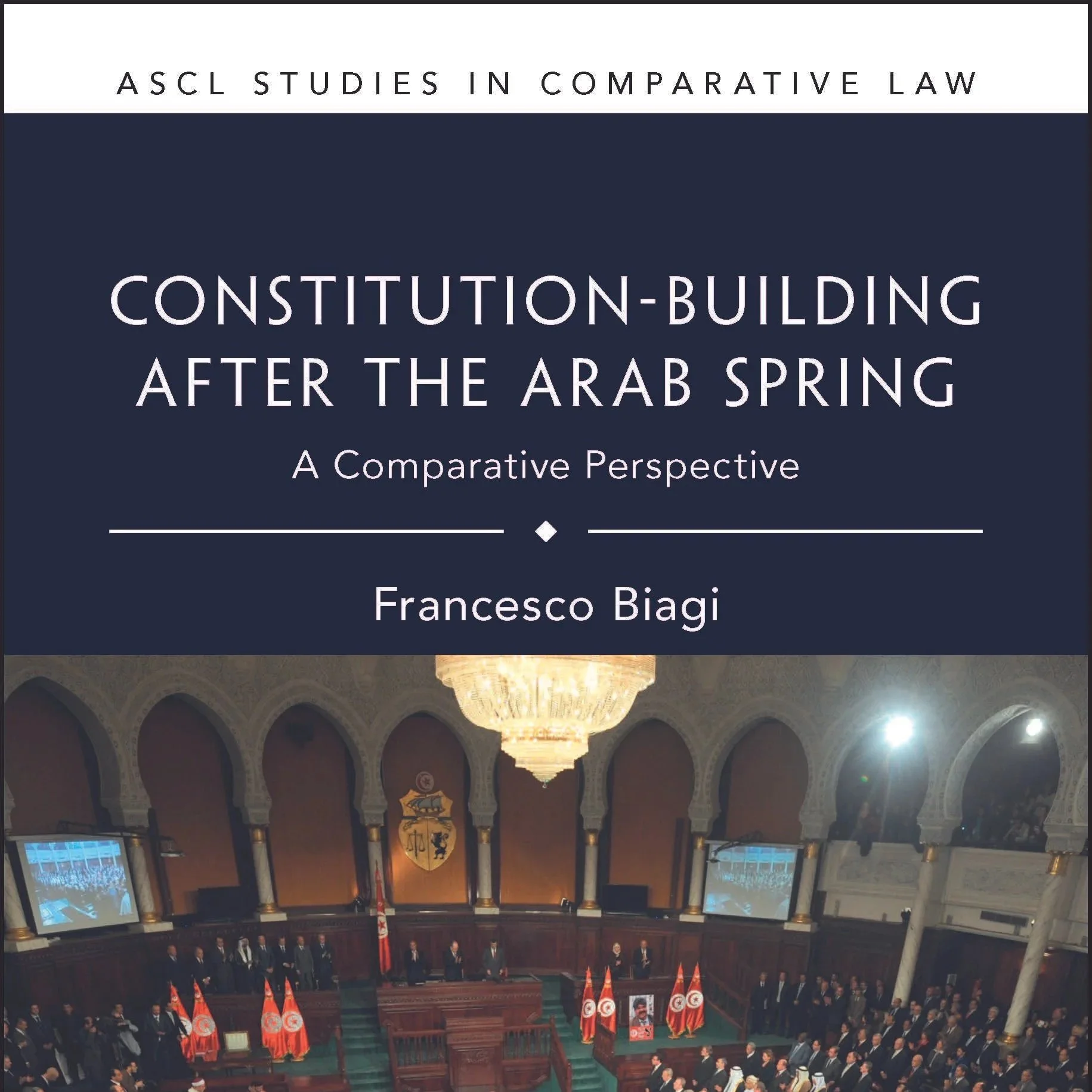Constitution-building after the Arab Spring. A Comparative Perspective
/Francesco Biagi
Q1. Tell us a little bit about the book.
How were post-Arab Spring constitutions drafted? What are the most significant elements of continuity and change within the new constitutional texts? What purposes are these texts designed to serve? To what extent have constitutional provisions been enforced? Have the principles of constitutionalism been strengthened compared to the past? These are some of the key questions that my book addresses. Constitution Building after the Arab Spring. A Comparative Perspective examines seven national experiences of constitution-building following the 2011 uprisings (namely those of Morocco, Algeria, Tunisia, Libya, Egypt, Syria, and Jordan), focusing on the period from the beginning of the Arab Spring through the 2023 Tunisian parliamentary elections. More specifically, the book compares these seven national experiences through four analytical frameworks: constitution-drafting and constitutional reform processes; separation of powers and forms of government; constitutional justice; and religion, women and non-Muslims within the framework of citizenship.
Q2. What inspired you to take up this project?
In general, I have always been extremely interested in Islamic legal systems (this interest dates back to my university days, when I graduated with a thesis on Islamic Law) and in transitional countries (even my first monograph – European Constitutional Courts and Transitions to Democracy (Cambridge University Press 2020) – dealt with transition processes). Thus, when the Arab Spring began in 2011, writing about this topic came naturally to me, even though at the time I did not think I would write a book on this specific subject.
I made the decision to do so a few years later, when I started providing training and consultancy (on various projects related to constitution-building and the rule of law) to governmental and judicial institutions in the Arab region, especially in Morocco, Jordan and Palestine. These activities – most of which have been organized by the Max Planck Foundation for International Peace and the Rule of Law (Heidelberg), where I have served first as a Senior Research Fellow and then as a Legal Consultant – gave me the opportunity to experience some of these constitution-building processes firsthand. This field experience motivated me enormously to undertake this book project.
Q3. Whose work was influential on you throughout the project?
Many works of Nathan J. Brown were very influential on me, but Constitutions in a Nonconstitutional World. Arab Basic Laws and the Prospects for Accountable Government (SUNY Press 2002) was undoubtedly the work that influenced me the most. While writing my monograph, I often asked myself many of the questions that Brown posed in his volume. Even the decision to focus my analysis on the present, while combining a historical perspective, owes much to Constitutions in a Nonconstitutional World.
The ground-breaking works of Zaid Al-Ali, Rafâa and Yadh Ben Achour, Nathalie Bernard-Maugiron, and Clark B. Lombardi on Arab constitutional systems were also extremely important sources of inspiration. When it comes specifically to women and non-Muslims, I must mention the seminal works of Abdullahi Ahmed An-Na’im and Nayla Tabbara.
Last but certainly not least, I benefited enormously from the teachings and works of my maestri, Giuseppe de Vergottini and Susanna Mancini, on comparative methodology.
Q5. What challenges did you face in writing the book?
I faced numerous challenges when writing this book. From a practical standpoint, staying up to date on key political and constitutional developments in seven countries was quite complex, as well as time-consuming. Another difficult challenge was finding primary sources and reliable materials on countries that were going through wars and armed conflicts (such as Libya and Syria). Even the analysis of the processes of constitutional enforcement proved to be extremely complicated: It often took me a very long time to fully understand if, how, and to what extent certain constitutional provisions were applied.
From a methodological perspective, the biggest challenge concerned the interdisciplinary nature of the book. Although this approach was simply indispensable (one need only consider the inseparable relation between law and religion in the Arab-Islamic world), I must admit that putting it into practice was not easy at all. From this point of view, the most complex chapter was the one on religion, women and non-Muslims within the framework of citizenship, a chapter in which I examine, inter alia, certain Quranic verses and other religious primary materials (including documents and declarations by prominent religious leaders and institutions from the region). I must thank Fadi Daou and Nayla Tabbara, who helped me tremendously to improve this chapter.
Q6. What do you hope to see as the book’s contribution to academic discourse and constitutional or public law more broadly?
From an academic perspective, I hope that my book can represent a valuable contribution to the studies of constitution-building processes. Constitution-building includes three main components, namely a) the process of constitution-making or constitutional reform, b) the substantive choices made by framers that are formalized in the new constitutional text, and c) the process of constitutional enforcement. The analysis of these components, which represents the core of my book, is essential to have a full understanding of a constitutional transition process.
More practically, I also hope that my book can provide some useful and practical insights for countries that are currently experiencing (or likely to experience in the future) a process of constitution-building after the fall of a dictatorial regime (as is the case of Syria after Bashar al-Assad was ousted from power in December 2024). Indeed, the book not only explains what went wrong after the Arab uprisings and how constitutions were often used by rulers as an instrument of power, but also contains a pars construens, suggesting – explicitly or implicitly – different choices and paths for a more democratic constitutional order.
Q7. What’s next?
I am currently working on two main projects. First, I am co-editing a book on Comparative Constitutional History. Volume 3: Landmark Judgments (Brill, forthcoming 2026) with my colleagues Justin O. Frosini and Jason Mazzone. The volume – which is the third of the series on “Comparative Constitutional History” – contains a set of essays that were presented at a conference on “Landmark Judgments” held in Bologna in September 2023. The book aims to contribute to the discussion on landmark judgments from a theoretical and comparative perspective, with contributions from scholars from both the Global North and the Global South.
Second, I am writing a chapter on “The Judiciary Under Illiberal and Populist Regimes” for the second edition of the Oxford Handbook of Comparative Constitutional Law (edited by Susanna Mancini, Michel Rosenfeld and András Sajó). In this chapter I explain how and why courts are captured by illiberal-populist forces, and I also examine the reasoning of populist courts, which is characterized by an instrumentalization of principles and notions typical of liberal-democratic constitutionalism. Furthermore, I discuss the various tools and techniques that courts can use to hinder a process of democratic backsliding, as well as how constitutional design and international institutions can help protect (at least in part) the independence and autonomy of the judiciary.
Suggested citation: Francesco Biaggi, Constitution-building after the Arab Spring. A Comparative Perspective IACL-AIDC Blog (21 October 2025) Constitution-building after the Arab Spring. A Comparative Perspective — IACL-IADC Blog
For more information and to purchase the book, click here (enter the code BIAGI24 at the checkout to obtain 20% discount)


